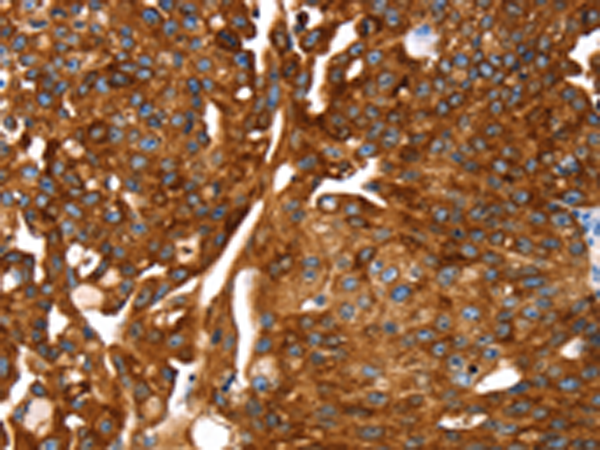

| WB | 咨询技术 | Human,Mouse,Rat |
| IF | 咨询技术 | Human,Mouse,Rat |
| IHC | 1/50-1/100 | Human,Mouse,Rat |
| ICC | 技术咨询 | Human,Mouse,Rat |
| FCM | 咨询技术 | Human,Mouse,Rat |
| Elisa | 1/10000 | Human,Mouse,Rat |
| Aliases | COX1, COX3, PHS1, PCOX1, PES-1, PGHS1, PTGHS, PGG/HS, PGHS-1 |
| WB Predicted band size | 69 kDa |
| Host/Isotype | Rabbit IgG |
| Antibody Type | Primary antibody |
| Storage | Store at 4°C short term. Aliquot and store at -20°C long term. Avoid freeze/thaw cycles. |
| Species Reactivity | Human |
| Immunogen | Synthetic peptide of human PTGS1 |
| Formulation | Purified antibody in PBS with 0.05% sodium azide and 50% glycerol. |
+ +
以下是关于Hormone Sensitive Lipase(HSL)抗体的3篇参考文献及其简要摘要:
1. **Egan, J.J. et al. (1992)**
*"Mechanisms of hormone-stimulated lipolysis in adipocytes: translocation of hormone-sensitive lipase to the lipid storage droplet."*
该研究利用HSL抗体证明,肾上腺素等激素通过诱导HSL从胞质向脂滴转位激活脂肪分解,揭示了HSL在脂解中的动态定位机制。
2. **Londos, C. et al. (1999)**
*"Perilipin, a protein phosphorylated by hormone-sensitive lipase, regulates lipolysis in adipocytes."*
通过HSL抗体的免疫沉淀技术,发现HSL磷酸化脂滴相关蛋白Perilipin,阐明了二者协同调控脂肪细胞脂解过程的分子机制。
3. **Anthonsen, M.W. et al. (1998)**
*"Identification of novel phosphorylation sites in hormone-sensitive lipase that are phosphorylated in response to isoproterenol and govern activation properties in vitro."*
研究采用HSL特异性抗体结合突变分析,揭示了β-肾上腺素能受体激动剂诱导的HSL磷酸化位点及其对酶活性的调控作用。
4. **Wang, S.P. et al. (2009)**
*"Hormone-sensitive lipase deficiency affects the expression of developmental transcription factors in adipocytes."*
利用HSL敲除模型和抗体检测,证明HSL缺失影响脂肪细胞分化相关转录因子(如PPARγ)的表达,提示其在脂肪代谢中的多重功能。
这些文献均通过HSL抗体的应用(如Western blot、免疫荧光等),探讨了HSL的调控机制、细胞定位及其在代谢疾病中的作用。
Hormone-sensitive lipase (HSL), encoded by the *LIPE* gene, is a key enzyme regulating lipid metabolism. It hydrolyzes stored triglycerides in adipocytes into free fatty acids and glycerol during energy-demanding states. HSL activity is tightly controlled by hormonal signals, primarily through phosphorylation cascades triggered by catecholamines (activation) and insulin (inhibition). Its role extends beyond adipose tissue, influencing steroidogenesis in reproductive organs and lipid signaling in muscles.
HSL antibodies are essential tools for studying its expression, localization, and regulation. These antibodies typically target specific regions of the HSL protein, such as the N-terminal domain or phosphorylation sites (e.g., Ser563 and Ser660). Validated applications include Western blotting, immunohistochemistry (IHC), and immunofluorescence (IF) to assess HSL levels in tissues like adipose, liver, or adrenal glands.
Researchers rely on HSL antibodies to investigate metabolic disorders, including obesity, diabetes, and cardiovascular diseases. Phospho-specific HSL antibodies further elucidate post-translational modifications linked to enzymatic activation. Quality validation (e.g., knockout controls) ensures specificity, as HSL shares structural similarities with other lipases. Commercial HSL antibodies are often raised in rabbits or mice, with monoclonal variants offering higher specificity for quantitative assays.
In summary, HSL antibodies enable critical insights into lipid dynamics, hormonal regulation, and metabolic pathophysiology.
×